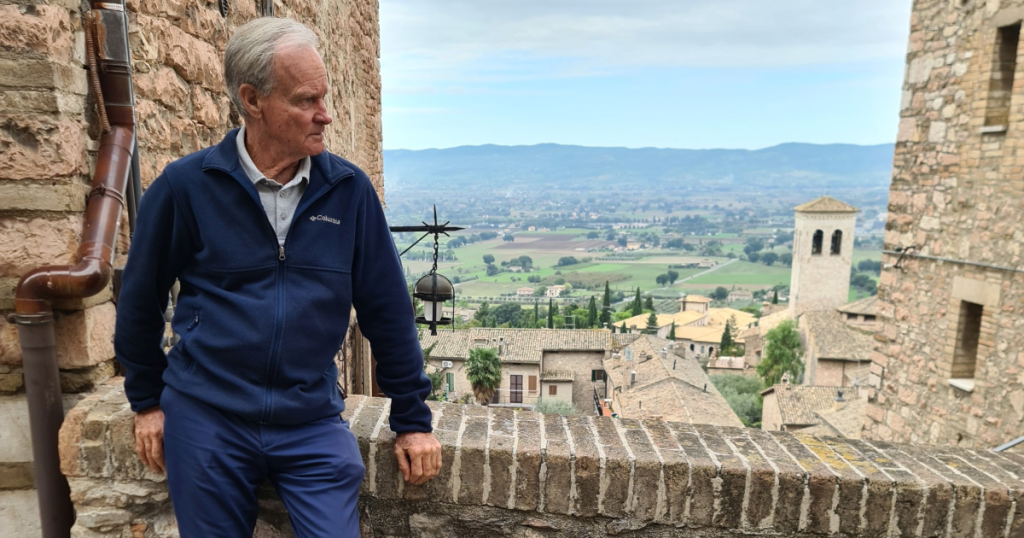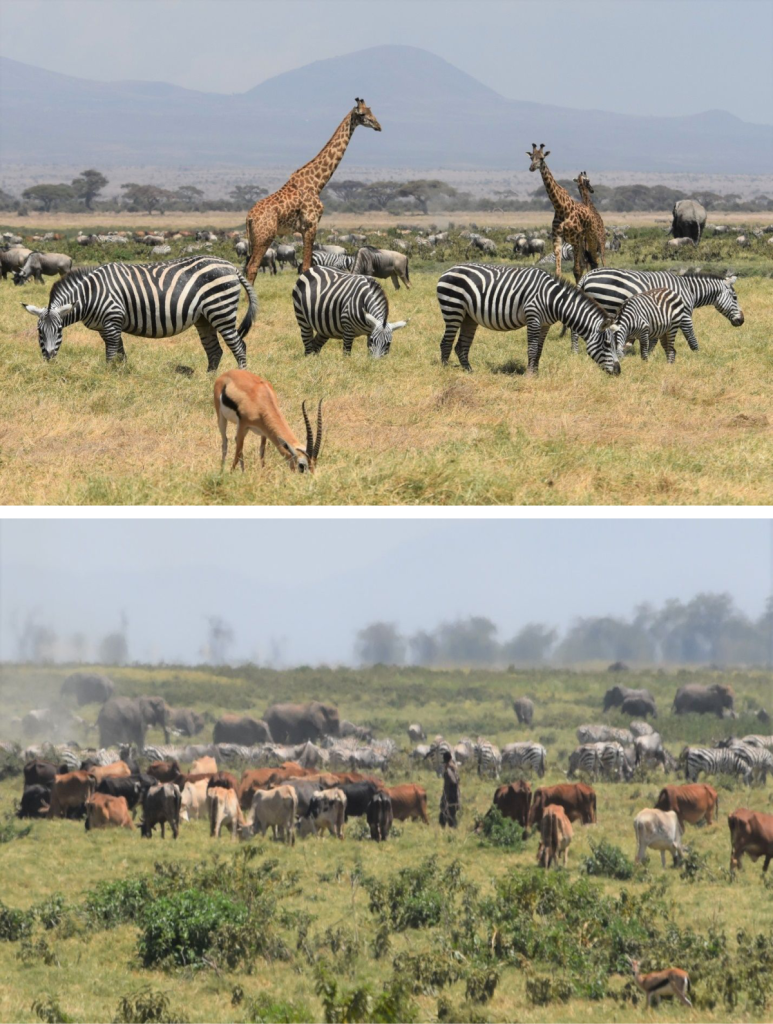Jonah Western’s world is at its most abundant when it dances what he calls “a lazy, ecological minuet”.
Western is a Kenyan conservationist who has spent his life wrestling with the interplay between people and animals on the savannas that used to be under the sway of the Maasai, and who is attempting an ambitious retrofit of a dwindling landscape to meet expanding needs.
The minuet is a dance of decorum and harmony, and to illustrate how it’s performed on the veld, Western reaches for a Maasai saying, “that elephants create grasslands and cattle create bushlands”. And as each moves forward and back, they “create this tapestry of habitats which maintain diversity”.
But he’s quick to acknowledge that the dancefloor is not as level or expansive as it should be. One of the main reasons is that what used to be communal land in the south of Kenya has been fragmented, privatised and degraded. The ways of the Maasai, pastoralists “who maintained the best grasslands in the world” with high animal populations, were disrupted by British colonial strictures, farming, post-colonial landgrabs and sell-offs, and by nature conservation shaped by national parks.

Western, who will be speaking at the 14th Oppenheimer Research Conference later this year, says that “national parks are vital for protecting wildlife, but are far too small to conserve large mammals and biodiversity”. Moreover, they “have also taken over community lands once shared with wildlife and offered few conservation benefits”. “I saw the first parks coming into being, and it created enemies at the gate. So you couldn’t work with the communities, and the communities said, ‘to hell with it, bring in the poachers because the wildlife is of no use to us anymore’.”
To overcome this legacy, Western has been pioneering a new, quietly radical “inside-out” approach at Amboseli National Park. It is Kenya’s second most popular, and arguably most photogenic, national park after the Maasai Mara national reserve, but its area of 392 sq km means it forms only a tiny, although significant, part of a much larger ecosystem that encompasses the Amboseli Basin. Famous for its elephants, it lies in the rainshadow of Mt Kilimanjaro, across the border in Tanzania, and between the Chyulu Hills and Tsavo West national parks, names given historic resonance by Ernest Hemingway and human-eating lions. Beyond this large protected area stretch communal ranches, where Maasai communities live and herd their cattle.
Western’s “inside-out” conservation strategy is a community-centred one that integrates traditional pastoralist practices with modern conservation tools to sustain biodiversity across working landscapes.
It requires a thorough understanding of pastoral tradition, the potential of technology, and the role of conservation in saving the world from the dystopian threat of global warming. And, because living systems are at the heart of the initiative, it means recognising that technology offers a partial solution, but that the governance of socio-economic, political and property systems is crucial to success.
Traditional Maasai pastoralism has long been guided by the “green wave”, or the “green flush”, the rippling growth of fresh grass across the landscape. This natural cycle is vital for sustainable grazing, and Maasai herders have traditionally measured it through milk yields and scouting by young warriors.
“What we do,” says Western, “which is very different than anybody else in measuring rangelands, is to measure the grazing pressure on the grasses. We’re not taking the condition of the animal to say what the outlook is. We’re taking how much grass is left and the rate at which that’s being taken down.
“The reason we do that is that in traditional Maasai culture they move around the landscape and they follow what we now call the green wave, and they have two ways of measuring it. First of all, milk yield, which is much more sensitive than body condition (of cattle). The gourd is the measure of that. Every single evening, the woman is milking the cow, and it’s going into the gourd. And she’s saying to the herders, ‘what on earth did you do today that the milk yield has gone down?’ It’s that sensitive. Or she says, ‘what did you do today that there’s such a good milk yield?’ And it’s not just the milk yield itself. It’s also the quality of the milk, which responds to the specific grass they’re eating.”
In addition to this is the role of young men, or community scouts, called ‘ele’enore’, who gather the information the community needs to weigh its options. They are “warriors who don’t yet have their cattle, who go all over the rangelands looking at what conditions are, where the water is, what the diseases are, what wildlife there is, and they bring it back to the elders. And these are the grazing committees. They sit under a tree, traditionally, and assess all the conditions of the rangelands, and what people have in livestock, and then they agree on where they’re going to move, when and under what conditions: where they will water, procedures for taking cattle to water, who governs the cattle when they go to water, and so on.”
“Over the last 50 to 60 years, what we’ve established very well in Amboseli is a robust monitoring scheme where we can monitor the grasslands, the habitats, every single species of plant and animal, numbers and distribution. That is mainly done through local resource assessors, and it’s very people intensive.
For this, “we used knitting needles held in an A-frame to measure grass hits” says Western. “A slanting pin frame which tells us not only how much grass there is, but the grazing pressure and the greenness of grass. That allows us to get in advance of where people are moving and seeing how quickly the grass is being taken down by wildlife, not just livestock, because don’t forget they’re competing with wildlife. That gives us the early warning system, which is very sensitive. So at the beginning of every single dry season, we have a meeting which says, this is the condition of the rangeland, this is your milk yield, these are your market prices for livestock, and this is the outlook from the grasslands.”
That’s where the technology comes into it, “where we go from the knitting needle to the satellite, which is 300 kilometres up”. Satellite imagery uses spectral bandsto assess the health and density of vegetation to calculate a Normalised Difference Vegetation Index (NDVI). “The signature of NDVI goes blank in the late dry season when you’ve got no more green grass left,” says Western, “so we integrate what’s on the ground and what we’re getting from the satellite imagery”.
And “instead of scribbling down on bits of paper, which I used to do and using a hand cranked calculator to do all the numbers, every single resource assessor in the field has a computer pad, and he enters the data directly into that pad. It goes through cyberspace. And in Nairobi, there’s a team who have built up an incredibly rich database, and you can go into any variable you want: grass condition, milk yields, and look at what it’s like in one location and how it scales up. And AI is making that even easier. To interrogate data and to scale up is a devil’s own job. But AI, so long as you use it in a thoughtful way, is doing so much of the work that was taking us days and weeks. Now we’re able to get that information back into the communities very quickly, but we can also give them visual images of what every single area looks like. Every time they measure a plot, they also do a 360 of the vegetation. What the community then has is a visual sense of what’s over the horizon. And we’re now trying to scale that up for the whole of the southern region of Kenya all the way from the coast to Lake Victoria. The other thing we’re doing is animating it. We’ve got wildlife numbers and distributions and now we’re animating them and you can see where they’re moving around the space, and you can overlay them on the green waves.”

Stitching together data and images is one thing. Land governance is another, but it too has been evolving. Grazing committees are being reestablished to help coordinate land use among private owners, forming landowner associations that enforce agreed-upon grazing practices, says Western. In Amboseli, a spatial land-use plan now designates areas for agriculture, livestock, and conservation, balancing economic needs with ecological health.
“Formerly,” explains Western, “a person, in order to be successful as a herder, not only had to know how to manage his livestock, he had to have a social network, which allowed him to move across the country up to 100km away. If he didn’t have those social networks, he wouldn’t be able to move through all those social barriers. Having that network is really the basis of reciprocity among the Maasai.
“Knowing that to build up my livestock, it’s not just about large numbers. They’ll die in a drought, so they are dissipated among friends, members and age mates. That’s spreading the risk. But where that’s breaking down is in the break-up of land itself, moving from communal land then to group branches, which are giving titles to members. And now it’s breaking down into individual holdings, of 23 acres where previously you moved over 3 000-4 000 square kilometres.
“What we’re trying to do, is to re-establish the grazing committees and say that it’s in everyone’s interest as individual landowners now to agree to a new form of governance. And this new form of governance brings together all the individual landowners to a landowner association, and counteracts what I call ‘the tyranny of small decisions’. It’s sort of halfway between the traditional system that worked on communal land and the new dispensation, which is individual private lands, but still with the same thing that’s driving it: the ecology of scale, the ability to move with the green wave to get the productivity on the one hand and to move into those areas which make you resilient to drought on the other.”
Part of the success of the approach has been to look beyond just cattle. Agriculture and tourism are incorporated into the goals of the broad ecosystem initiatives. “’We’re milking our second cattle through tourists’ is how it’s viewed,” says Western. “It’s bringing in the revenue, and that puts kids in school and gives hope for the future. There’s a realisation of how to manage multiple income streams. There’s a herder income stream, and tourism is another income stream.”
This diversification has been a priority within Amboseli itself and has an added element. “There are parts of Amboseli which are swamps,” says Western. “Those have gone under irrigated agriculture, and now every single member of the pastoral community is given land for agriculture as well. So that means they have an income coming in from agriculture. They’ve divided their land up spatially into areas of agriculture, areas for pastoralism and wildlife. Every member is entitled to two or three acres of what is essentially irrigated land. Over time, the rising human population has totally overwhelmed the subsistence economy, and that means they’ve had to diversify into agriculture.”
How has biodiversity fared through the various tribulations of the last 50 years?
“At Amboseli, it’s definitely gone down,” says Western. “That’s because we had the compression of elephants during the poaching days of the 1970s, which as in South Africa knocked out the woodlands, the woody vegetation. We’ve lost a large part of the woody species diversity, both in plants and also in animals, whether that’s primates, bushbuck, woodpeckers; we’ve really lost diversity.”
However, “that diversity has not been lost outside, because the elephants have abandoned the areas which they had before, which means that those thickets have come back.
“What we’re trying to do now is win that space back for elephants to move outside. I did a count last week in Amboseli. I count elephants every month. There are only 140 inside the park out of a population of 2 000. Because they’ve grazed it down so much, they’re having to redisperse.
“But within the park we have two to three times more wildlife than what I counted in the 1960s,” something that is evident from the picturesque photographs that entice tourists from around the world. “We’ve got more zebra, more wildebeest, more hippo and all the grazing species. But the browsers have gone down.”
This underscores for Western the importance of open spaces, mobility, and communal resource management in maintaining ecological balance and a sustainable coexistence between humans and wildlife.
As his “inside-out” approach to conservation gains traction, so the seasonal hymn of renewal that sounds across the savanna is swelling, and Western can hear the minuet’s rhythm drawing people, animals and the land into a new tapestry of hope.
Jonah Western is founder and chairman of the African Conservation Centre, a former director of Wildlife Conservation Society’s International Program, and has been director of the Amboseli Conservation Programme since 1967. He is a former director of Kenya Wildlife Service and chairman of the Wildlife Clubs of Kenya, and IUCN’s African Elephant and Rhino Specialist Groups. He is the author of: ‘Conservation for the Twenty-first Century; In the Dust of Kilimanjaro’, ‘The Future of the Open Rangelands: An exchange of ideas between East Africa and the American Southwest’, and ‘We Alone: How Humans Have Conquered the Planet and Can Also Save It’.
Western will be addressing the annual Oppenheimer Research Conference which takes place this year from 15th-17th October.


